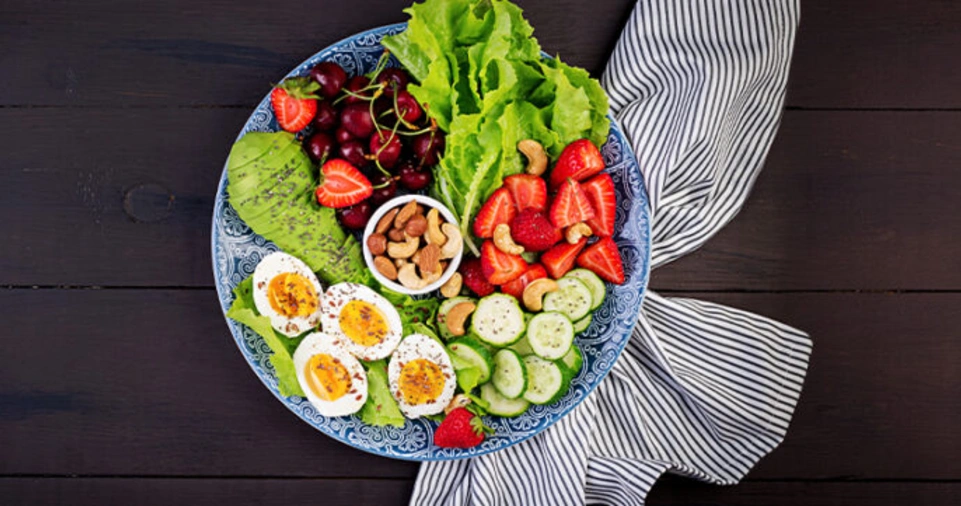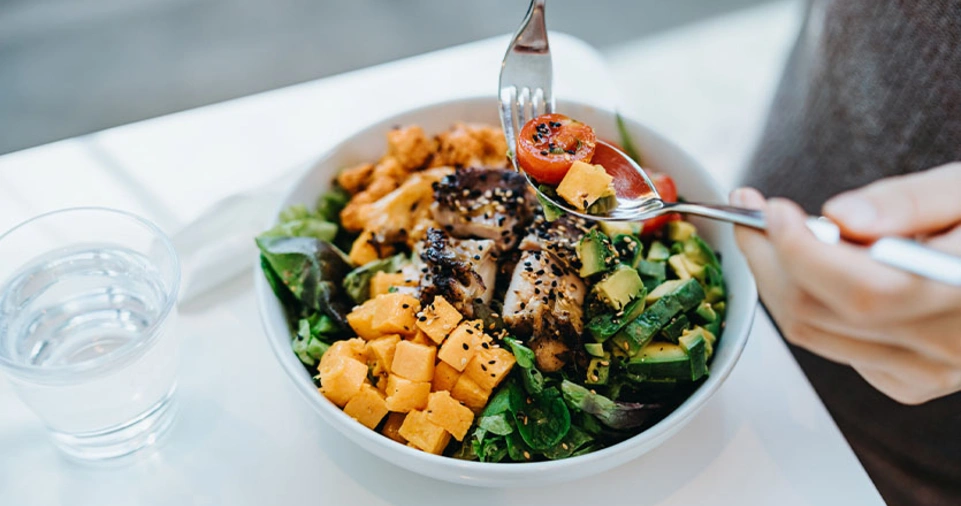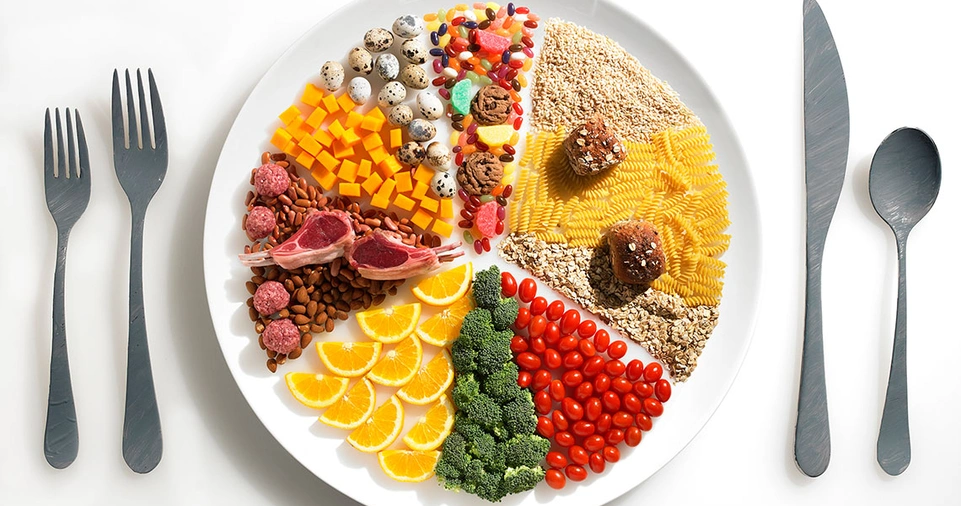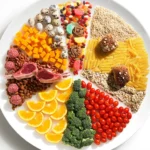Eating healthy doesn’t have to be complicated. The key is balance. A balanced plate helps regulate blood sugar, fuels your body with essential nutrients, and supports long-term health.
Whether you’re planning breakfast, lunch, or dinner, the concept remains the same: combine macronutrients (carbohydrates, proteins, and fats) with a variety of micronutrients (vitamins and minerals) from whole food sources.
This article will guide you through how to build a balanced plate for every meal, breaking down the core components, offering practical tips, and exploring variations for different dietary needs.
What is a Balanced Plate?
A balanced plate refers to a meal composition that includes the right proportions of macronutrients and micronutrients to support health, energy, and satiety. It is based on the principle of dietary diversity, portion control, and nutrient density.
Core Components of a Balanced Plate:
Vegetables and Fruits (40-50%)
- Rich in fiber, vitamins, minerals, and antioxidants.
- Examples: Leafy greens, cruciferous vegetables, berries, citrus fruits.
Proteins (20-30%)
- Essential for muscle repair, enzyme production, and immune function.
- Examples: Chicken, fish, tofu, legumes, eggs, Greek yogurt.
Whole Grains or Starchy Vegetables (20-30%)
- Provide sustained energy through complex carbohydrates.
- Examples: Brown rice, quinoa, sweet potatoes, oats.
Healthy Fats (10-15%)
- Support hormone production and help absorb fat-soluble vitamins.
- Examples: Avocados, olive oil, nuts, seeds.
Fluids
- Hydration is a crucial part of balanced nutrition.
- Water, herbal teas, and broths are good options.
The Balanced Plate Formula for Each Meal

Breakfast
- Why it matters: Sets the tone for the day, stabilizes blood sugar, boosts cognitive performance.
- Example Plate:
- 2 boiled eggs (protein)
- 1 slice of whole grain toast (carb)
- 1/2 avocado (healthy fat)
- 1 cup mixed berries (fiber + antioxidants)
Lunch
- Why it matters: Refuels energy, improves afternoon focus, prevents overeating later.
- Example Plate:
- Grilled chicken breast (protein)
- Mixed greens salad with tomatoes, cucumbers, carrots (vegetables)
- 1/2 cup quinoa (carbohydrates)
- Olive oil and lemon dressing (healthy fat)
Dinner
- Why it matters: Aids muscle recovery, prevents late-night snacking.
- Example Plate:
- Baked salmon (protein + healthy fat)
- Steamed broccoli and roasted carrots (vegetables)
- 1/2 cup brown rice (carbohydrate)
Adapting the Balanced Plate for Different Diets
Vegetarian
- Protein: Legumes, tofu, tempeh, eggs, dairy
- Fats: Seeds, nuts, plant oils
- Carbs: Whole grains, starchy vegetables
Vegan
- Protein: Lentils, beans, tofu, tempeh, plant-based protein powders
- Fats: Avocados, flaxseeds, olive oil
- Micronutrient focus: B12, iron, omega-3s
Low-Carb/Keto
- Carbs: Non-starchy vegetables
- Fats: Nuts, seeds, oils, fatty fish
- Proteins: Meats, eggs, cheese
Mediterranean
- Emphasis: Olive oil, fish, legumes, vegetables, moderate dairy
- Benefits: Heart health, anti-inflammatory properties
Common Mistakes and How to Avoid Them
| Mistake | Solution |
|---|---|
| Skipping vegetables | Add a side salad or steamed greens |
| Overloading carbs | Stick to whole grains and proper portions |
| Ignoring healthy fats | Include a tablespoon of olive oil or a handful of nuts |
| Lack of protein | Ensure each meal includes a protein source |
| Drinking sugary beverages | Opt for water, tea, or infused water |
Smart Meal Planning Tips
- Pre-portion proteins and grains for grab-and-go meals.
- Prep vegetables in bulk: wash, chop, and store.
- Cook in batches and freeze extras.
- Use the plate method as a visual guide: half veg, quarter protein, quarter carbs.
- Keep healthy snacks handy: Greek yogurt, almonds, hummus and veggies.
Balanced Plate for Special Populations

Children
- Smaller portions with a focus on colorful fruits and vegetables.
- Include calcium-rich foods like yogurt and milk.
Athletes
- Increased protein and carb intake for muscle repair and energy.
- Timing of meals matters more: eat protein and carbs post-workout.
Seniors
- Easy-to-chew proteins (eggs, fish).
- Focus on bone health nutrients: calcium, vitamin D, magnesium.
Pregnant Women
- Include folate-rich foods, iron, and omega-3s.
- Prioritize hydration and frequent small meals.
Sample 3-Day Meal Plan
| Meal | Day 1 | Day 2 | Day 3 |
|---|---|---|---|
| Breakfast | Oatmeal with banana and almonds | Greek yogurt with berries and chia seeds | Scrambled eggs with spinach and toast |
| Lunch | Turkey wrap with mixed greens and hummus | Lentil soup and whole grain bread | Grilled tofu with quinoa and roasted vegetables |
| Dinner | Grilled salmon with asparagus and sweet potato | Stir-fried chicken with brown rice and broccoli | Baked cod with green beans and couscous |
ALSO READ: How to Brew the Perfect Cup of Coffee Every Time?
Conclusion
Building a balanced plate for every meal is not about strict rules or deprivation—it’s about variety, moderation, and mindful eating. By focusing on whole foods and the core components of vegetables, proteins, whole grains, and healthy fats, you can improve energy, support overall health, and enjoy meals more fully. Whether you’re cooking for yourself, your family, or managing dietary needs, a balanced plate is a reliable, adaptable tool to nourish your body and mind.







